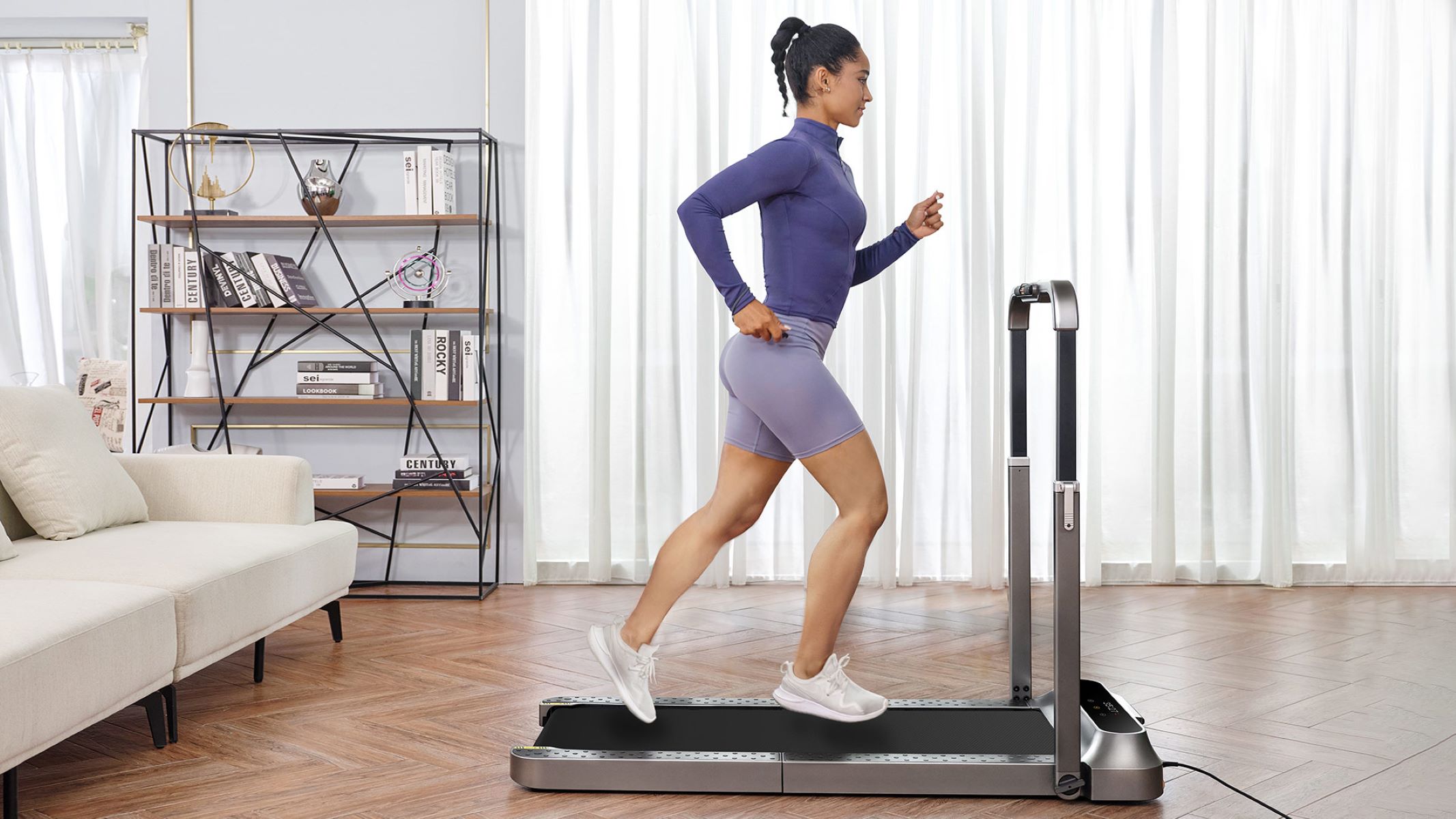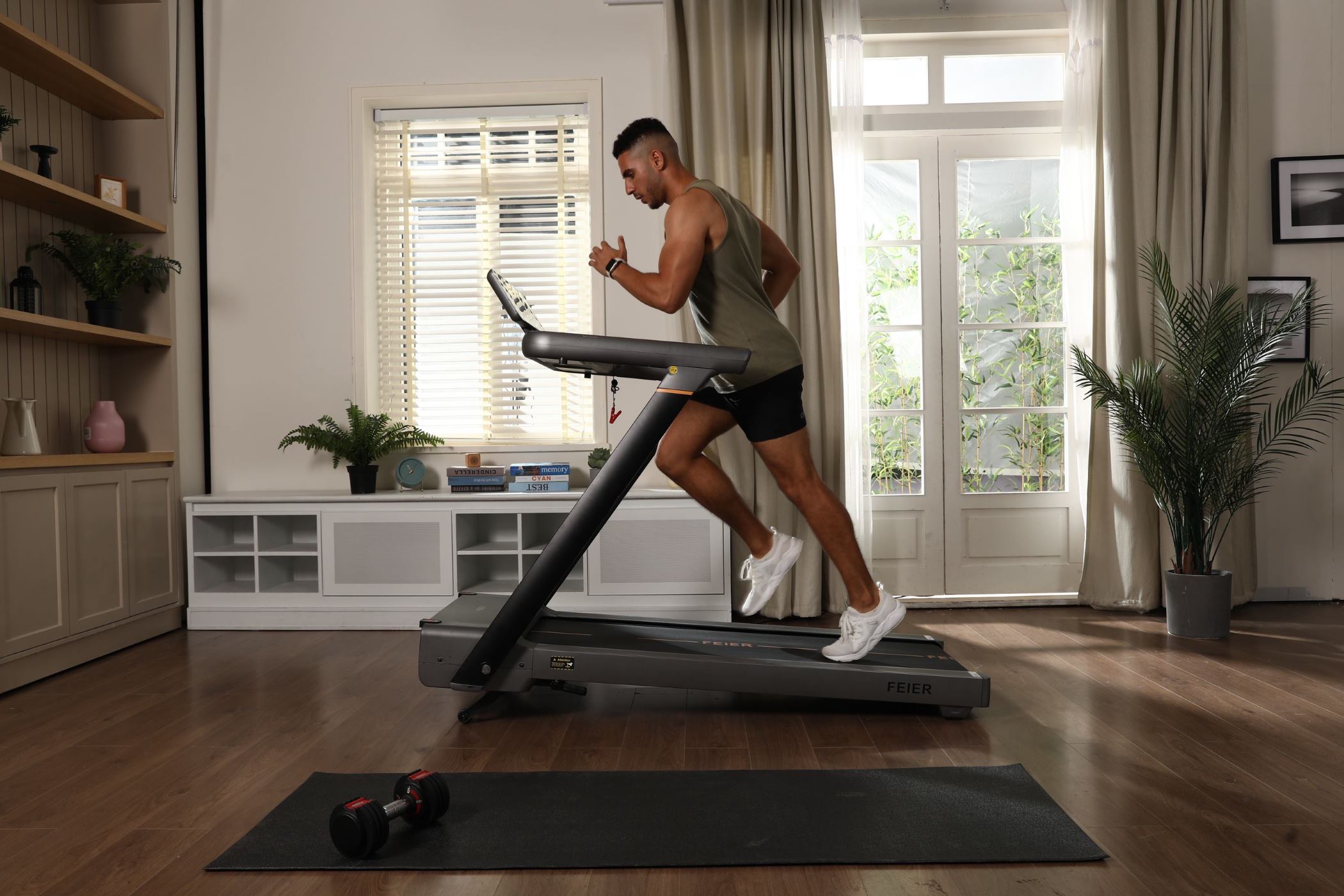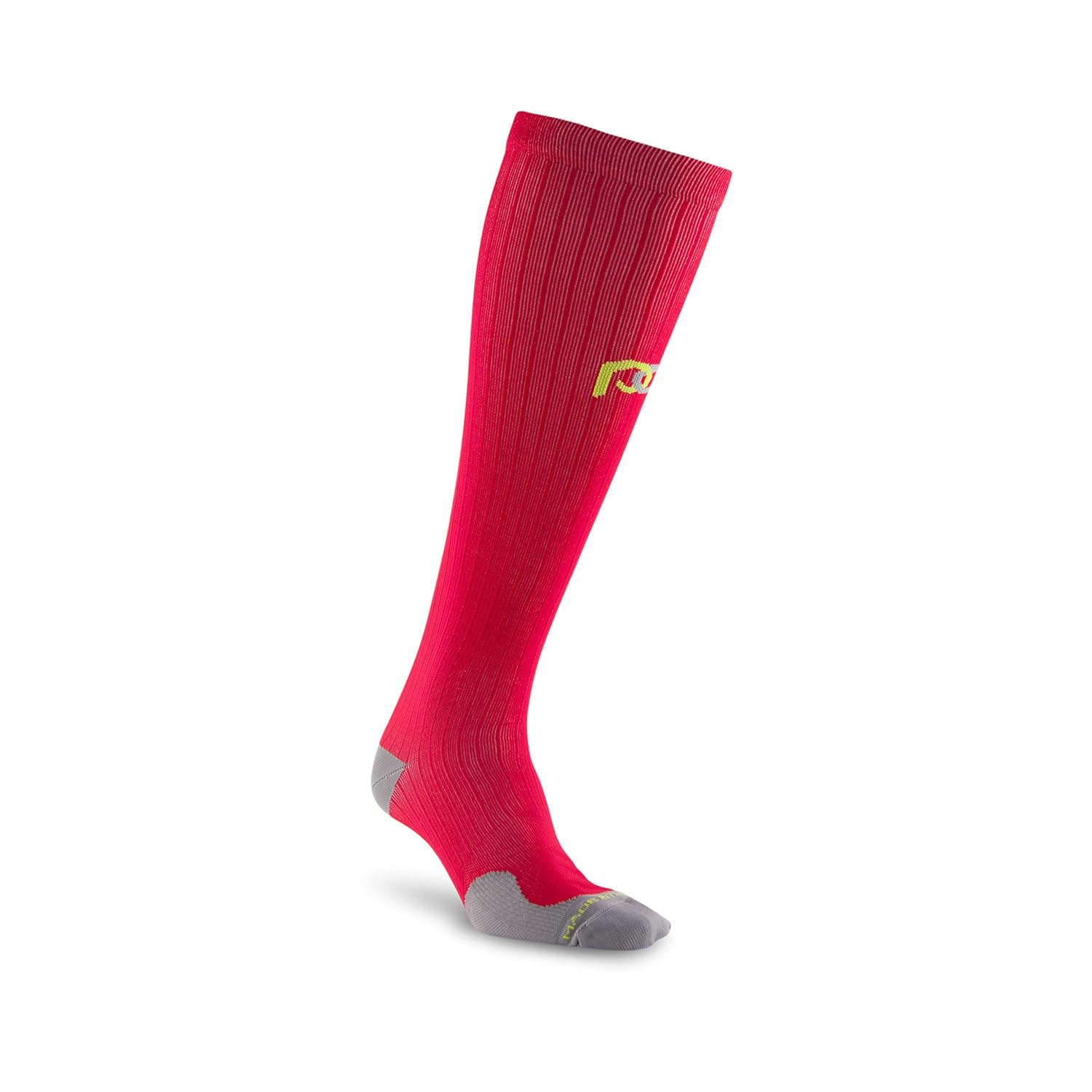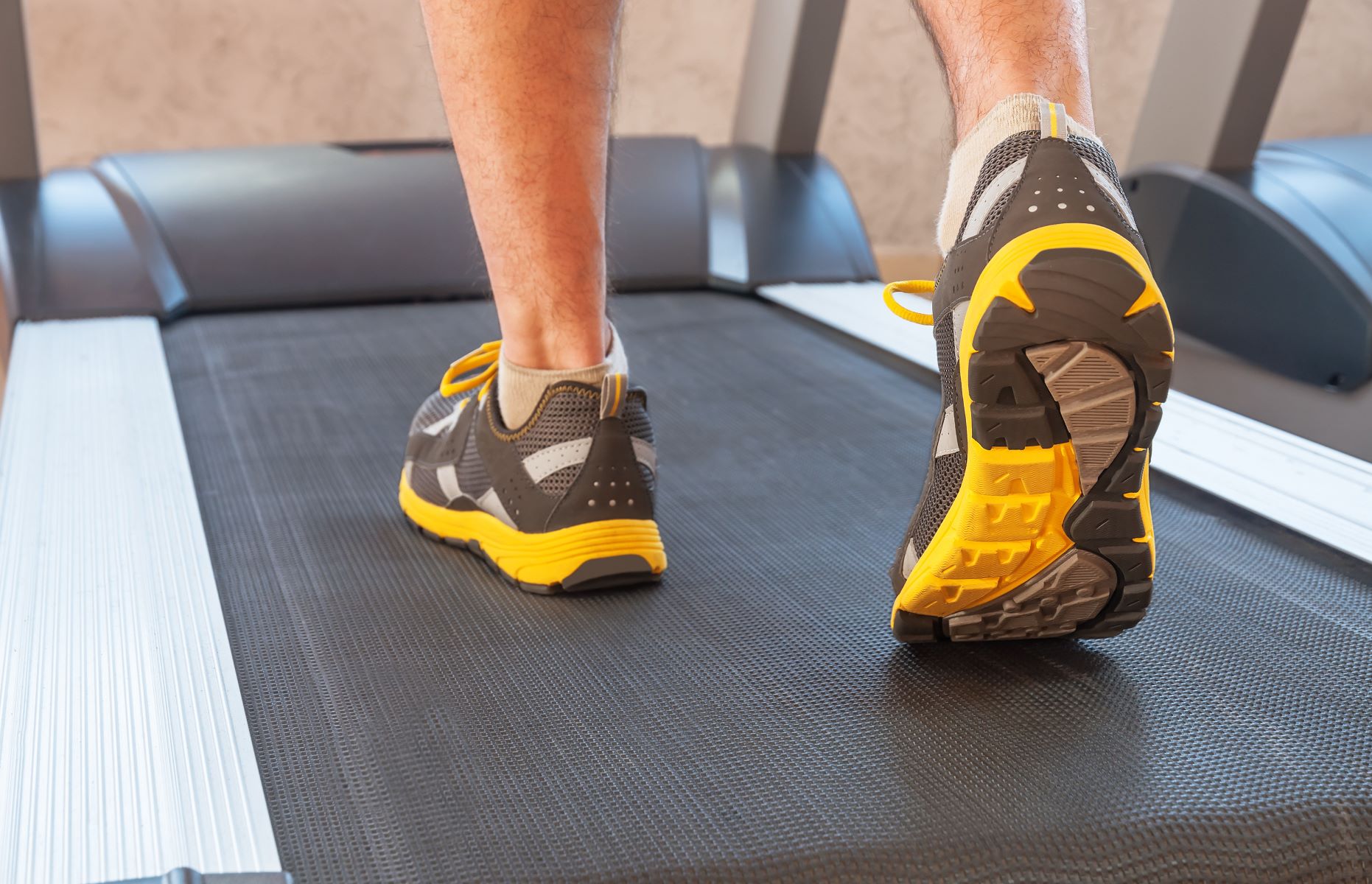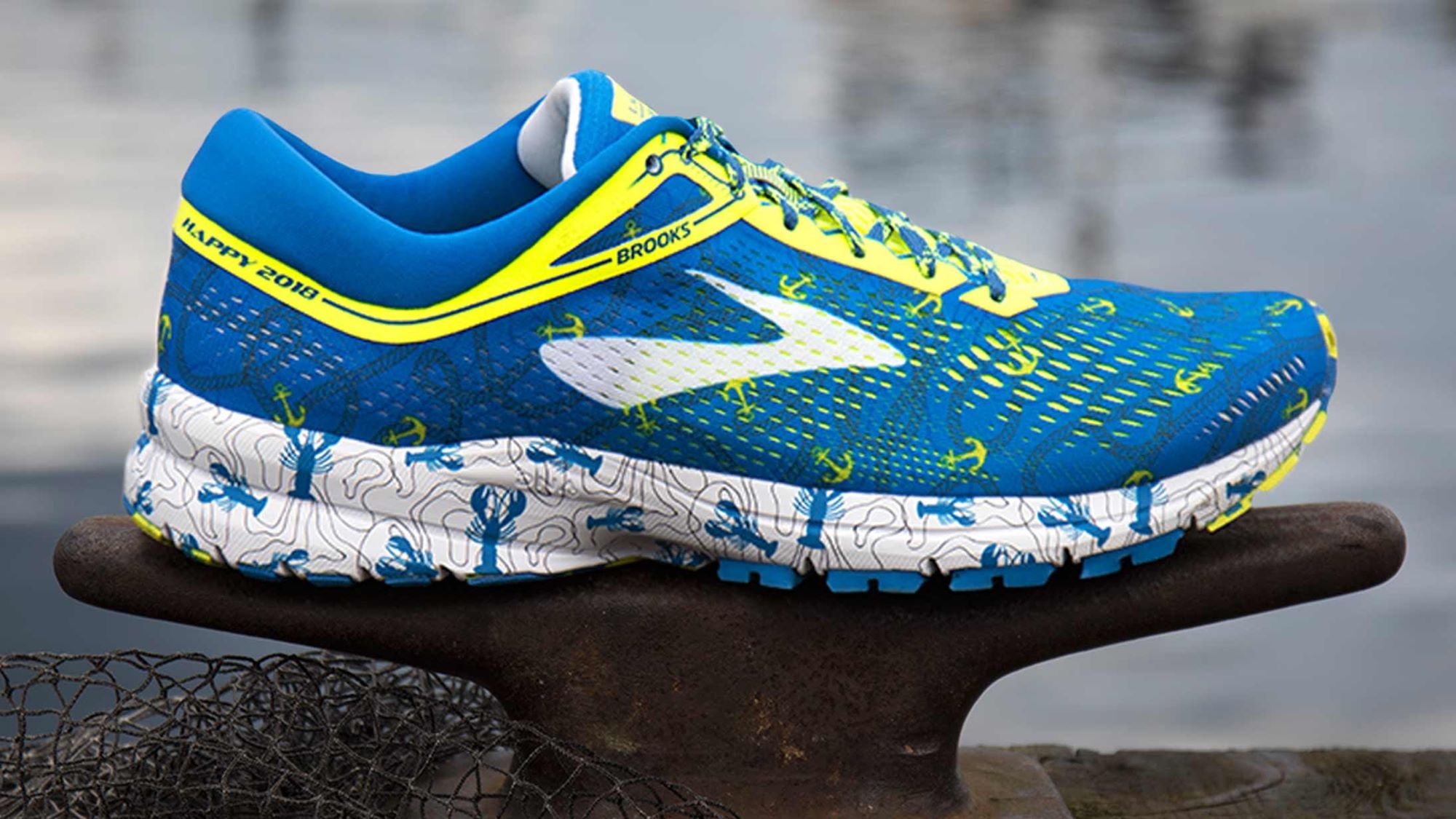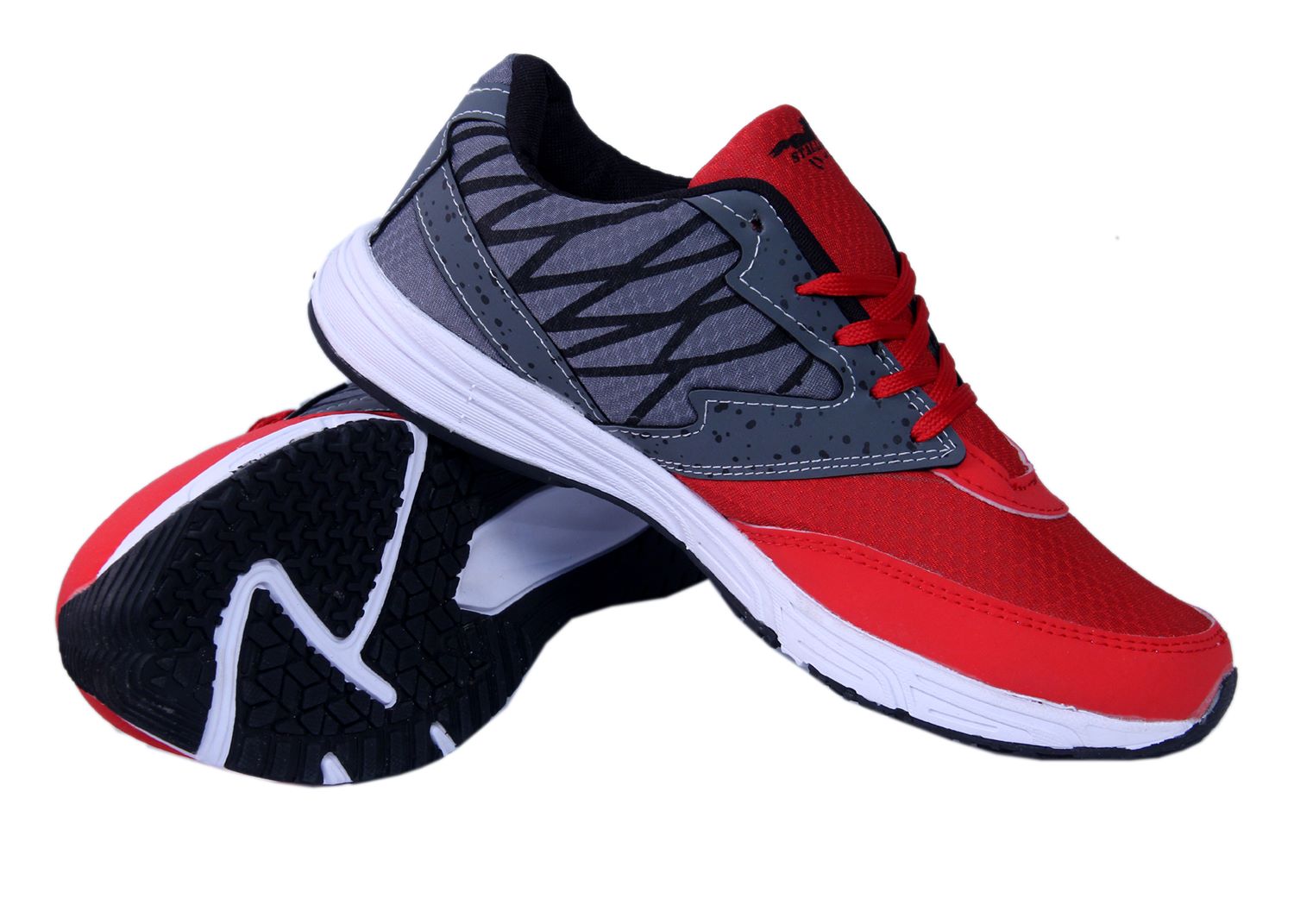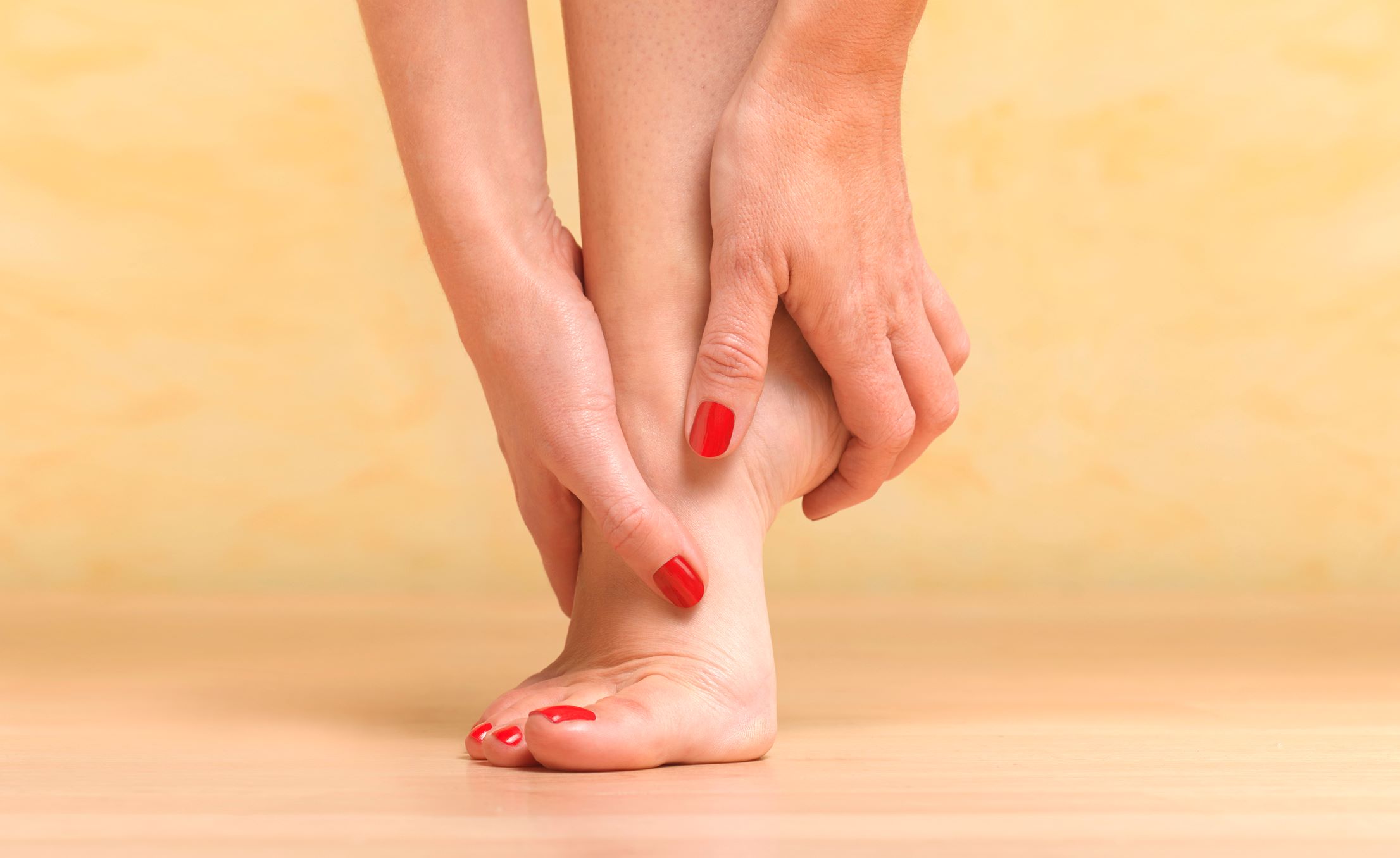

Featured
Why Does My Feet Hurt When I Workout
Modified: August 22, 2023
Discover why your feet hurt during workouts and learn how to relieve the pain. Get featured tips and advice to keep your feet happy and healthy while exercising.
Introduction
Have you ever experienced foot pain during your workouts? It can be frustrating and discouraging, hindering your progress and enjoyment of exercise. Understanding the reasons behind this discomfort is essential to finding the right solutions and preventing further issues.
Foot pain during workouts can occur for a variety of reasons, including improper footwear, overuse and excessive impact, lack of proper warm-up and stretching, muscle imbalances, and underlying conditions or injuries. Identifying the cause of your foot pain is crucial for targeted treatment and prevention.
This article aims to shed light on the common causes of foot pain during workouts and provide practical solutions to alleviate and prevent this discomfort. Whether you’re an avid athlete, regular gym-goer, or simply someone who enjoys staying active, this information can benefit you in maintaining a pain-free and rewarding exercise routine.
By addressing the root causes of foot pain and implementing preventive measures, you can enhance your workout experience and optimize your overall foot health. So let’s delve into the factors that contribute to foot pain during workouts and explore effective strategies to overcome them.
Understanding Foot Pain during Workouts
Foot pain during workouts can range from mild discomfort to debilitating agony, significantly impacting your ability to exercise effectively. It is essential to understand the underlying reasons behind this pain to address it appropriately.
One of the primary causes of foot pain during workouts is the excessive stress placed on the feet. Physical activities such as running, jumping, and weightlifting can result in repetitive impact and strain on the feet. This strain can lead to the development of various conditions, including muscle strains, ligament sprains, and stress fractures.
Another key factor contributing to foot pain during workouts is inadequate foot support and alignment. Wearing improper footwear, such as shoes without proper cushioning or arch support, can lead to improper foot mechanics, which can place excessive stress on certain areas of the foot.
Furthermore, muscle imbalances and weak foot muscles can also be a contributing factor to foot pain during workouts. If certain muscles are weak or underutilized, it can affect the overall stability and alignment of the foot, leading to discomfort and pain.
Understanding the specific causes of foot pain during workouts is crucial for finding effective solutions. By identifying the root cause, you can implement targeted strategies to alleviate the pain and prevent future issues.
In the following sections, we will delve deeper into the common causes of foot pain during workouts, including improper footwear, overuse and excessive impact, lack of proper warm-up and stretching, muscle imbalances, as well as underlying conditions and injuries. With this knowledge, you will be equipped with the necessary information to address and overcome foot pain during your workout sessions.
Common Causes of Foot Pain
Foot pain during workouts can be attributed to several common causes. Understanding these causes is crucial in identifying the underlying issue and finding appropriate solutions. Let’s explore the most frequent culprits of foot pain during exercise:
1. Improper Footwear: Wearing footwear that doesn’t provide adequate cushioning, arch support, or proper fit can lead to foot pain. Shoes that are too tight, too loose, or worn-out can cause discomfort and affect foot mechanics during workouts.
2. Overuse and Excessive Impact: Engaging in high-impact activities such as running or jumping without giving your feet enough time to rest and recover can lead to foot pain. The repetitive stress placed on the feet can result in conditions like plantar fasciitis, stress fractures, and Achilles tendonitis.
3. Lack of Proper Warm-up and Stretching: Skipping warm-up exercises and neglecting to stretch the muscles and ligaments of the feet can contribute to foot pain. Cold and tight muscles are more prone to injury and can cause discomfort during workouts.
4. Muscle imbalances and Weak Foot Muscles: Weak foot muscles and muscle imbalances can disrupt proper foot mechanics, leading to pain and discomfort. When certain muscles are too weak or overly dominant, it can affect the stability and alignment of the foot.
5. Conditions and Injuries: Certain conditions and injuries can contribute to foot pain during workouts. Common examples include plantar fasciitis (inflammation of the tissue connecting the heel bone to the toes), Achilles tendonitis (inflammation of the Achilles tendon), metatarsalgia (pain and inflammation in the ball of the foot), and stress fractures (tiny cracks in the bones of the foot).
By understanding these common causes of foot pain, you can take proactive measures to prevent and address discomfort during your workouts. The following sections will explore in more detail how to mitigate foot pain caused by improper footwear, overuse and excessive impact, lack of warm-up and stretching, and muscle imbalances. Let’s uncover effective strategies to alleviate and prevent foot pain during workouts.
Improper Footwear
One of the leading causes of foot pain during workouts is wearing improper footwear. The shoes you choose for exercise play a vital role in providing comfort, support, and protection to your feet. Wearing the wrong type of shoes can lead to foot pain and various injuries. Here are the key factors to consider when it comes to proper footwear:
1. Cushioning: The shoes should have adequate cushioning to absorb shock and reduce the impact on your feet during workouts. The cushioning helps distribute the forces evenly, preventing excessive stress on specific areas and reducing the risk of discomfort.
2. Arch Support: The arch support in your shoes is crucial, especially if you have flat feet or high arches. Proper arch support helps maintain the natural alignment of the foot and reduces the strain on the arch, preventing arch-related pain and conditions like plantar fasciitis.
3. Proper Fit: Wearing shoes that fit properly is essential. Shoes that are too tight can compress your feet, leading to pain and discomfort, while shoes that are too loose can cause instability and increase the risk of injuries. Always ensure there is enough room for your toes to move comfortably and that the shoes securely hug your feet.
4. Breathability: Look for shoes that offer good breathability to prevent excessive sweating and moisture buildup. Moisture can lead to friction and blisters, causing discomfort during workouts.
5. Activity-Specific Shoes: Different activities require specific footwear. Running shoes, cross-training shoes, and weightlifting shoes are all designed with distinct features to support the specific demands of each activity. Using the appropriate shoes for your workouts can enhance foot performance and reduce the risk of pain and injuries.
To find the right pair of shoes, consider visiting a specialty running or athletic shoe store where knowledgeable staff can assess your feet and recommend suitable footwear. Additionally, try on different brands and models, and take some time to walk or jog around the store to ensure comfort and proper fit.
Remember that shoes wear out over time, so it’s essential to replace them regularly, especially if you are an avid exerciser or athlete. As a general rule, consider replacing your workout shoes every 300-500 miles or every six months, depending on your activity level and shoe quality.
By investing in proper footwear and paying attention to factors like cushioning, arch support, fit, breathability, and activity specificity, you can significantly reduce foot pain during workouts. Your shoes should provide the necessary support and comfort to withstand the demands of your exercise routine and keep your feet happy and pain-free.
Overuse and Excessive Impact
Another common cause of foot pain during workouts is overuse and excessive impact. Engaging in high-impact activities or pushing your body beyond its limits without proper rest and recovery can lead to various foot-related issues. Here are the key factors to consider when it comes to managing overuse and excessive impact:
1. Rest and Recovery: Your feet need time to rest and recover between workouts. Overtraining or not allowing adequate recovery time can lead to overuse injuries, such as stress fractures, tendonitis, or muscle strains. Incorporate rest days into your exercise routine and listen to your body’s signals to prevent overuse injuries.
2. Gradual Progression: If you’re starting a new workout program or increasing the intensity of your current routine, it’s important to progress gradually. Sudden or significant increases in activity can overload and strain the muscles and ligaments of the feet, leading to pain and injury. Increase your workout volume or intensity gradually to give your body time to adjust.
3. Low-Impact Alternatives: If you’re experiencing foot pain from high-impact activities like running or jumping, consider incorporating low-impact exercises into your routine. Activities such as swimming, cycling, or using an elliptical machine can provide a cardiovascular workout with minimal stress on the feet and joints.
4. Cross-Training: Engaging in a variety of exercises instead of focusing solely on one activity can help reduce the repetitive stress on specific areas of the feet. Incorporating strength training, flexibility exercises, and other low-impact activities can help improve overall foot and leg strength, stability, and flexibility.
5. Proper Technique: Ensure you’re using proper technique during your workouts to minimize excessive stress on the feet. Improper form, such as landing too hard during jumps or putting excessive pressure on the toes while running, can increase the risk of foot pain and injury. Seek guidance from a knowledgeable fitness professional to learn correct form and technique for your specific activities.
6. Surface Considerations: The surface on which you work out can also affect the impact on your feet. Hard surfaces like concrete can be harsh on the feet and increase the risk of pain and injury. Whenever possible, choose surfaces with more cushioning, such as grass or rubberized tracks, to reduce the impact on your feet.
Taking these precautions and managing overuse and excessive impact can significantly reduce foot pain during workouts. It’s vital to listen to your body, allow sufficient rest and recovery, progress gradually, and incorporate a variety of exercises to minimize the strain on your feet. By balancing intensity, frequency, and impact, you can continue enjoying your workouts while minimizing the risk of foot pain and injuries.
Lack of Proper Warm-up and Stretching
Lack of a proper warm-up and stretching routine is a common factor contributing to foot pain during workouts. Neglecting these crucial steps before exercise can result in tight muscles, reduced flexibility, and increased risk of injury. Here’s why warm-up and stretching are essential, along with some key techniques to incorporate:
1. Increased Blood Flow: A warm-up increases blood flow to the muscles, including those in the feet, preparing them for the upcoming activity. This increased circulation helps loosen up the muscles, making them more pliable and less prone to injuries.
2. Improved Flexibility: Proper stretching during warm-up can improve flexibility and range of motion in the feet and lower extremities. Flexibility is crucial for preventing muscle imbalances and reducing the risk of strains and sprains during workouts.
3. Activation of Muscles: A warm-up session primes the relevant muscles and activates them for optimal performance. This includes the muscles in the feet, ensuring they are ready to handle the subsequent demands of the workout.
4. Dynamic Warm-up: Start your warm-up with dynamic exercises that mimic the movements you’ll be doing during your workout. For example, light jogging, butt kicks, high knees, and ankle rotations can effectively warm up the feet and prepare them for more intense activity.
5. Static Stretching: Follow the dynamic warm-up with static stretches to elongate and relax the muscles. Incorporate stretches that target the calf muscles, Achilles tendon, plantar fascia, and other muscles in the feet and lower legs. Hold each stretch for about 20-30 seconds without bouncing and focus on maintaining proper form and breathing.
6. Foot Strengthening Exercises: Alongside stretching, it’s essential to include exercises that strengthen the muscles in the feet. Simple exercises like toe curls, picking up marbles with your toes, or calf raises on a step can improve foot strength and stability, reducing the risk of pain and injury.
Remember, warming up and stretching should not be rushed but given proper attention and time. Spend at least 10-15 minutes on your warm-up routine before diving into your workout. This time investment can help prevent foot pain and ensure a more productive and enjoyable exercise experience.
By incorporating a proper warm-up routine that includes dynamic exercises, static stretching, and foot-strengthening exercises, you can effectively prepare your feet for the demands of your workout. Not only will this reduce the risk of foot pain and injuries, but it will also improve your physical performance and overall foot health.
Muscle Imbalances and Weak Foot Muscles
Muscle imbalances and weak foot muscles can contribute to foot pain during workouts. When certain muscles are weak or underutilized, it can disrupt the proper alignment and stability of the foot, leading to discomfort and potentially increasing the risk of injuries. Understanding and addressing these imbalances is crucial for a pain-free workout experience. Here’s what you need to know:
1. Importance of Balance: Proper balance between different muscle groups is essential for optimal foot function. Imbalances occur when certain muscles are stronger or more dominant than others, affecting the overall stability and alignment of the foot.
2. Weak Foot Muscles: Weak foot muscles can be a result of a sedentary lifestyle, wearing shoes with excessive cushioning and arch support, or simply neglecting foot-specific exercises. When foot muscles are weak, it can compromise the support and stability of the arches, leading to overpronation or supination, increased strain on other structures, and eventually causing pain during workouts.
3. Muscle Imbalances: Muscle imbalances occur when specific muscle groups become stronger or tighter than their opposing muscles. For example, tight calf muscles and weak anterior tibialis muscles can lead to imbalances that alter the mechanics of the foot and increase the risk of pain and injury.
4. Strengthening Exercises: Incorporating exercises that target the muscles of the feet and lower legs can help correct imbalances and strengthen weak muscles. Exercises like toe curls, towel scrunches, and resistance band exercises can improve foot muscle strength and stability. Additionally, strengthening exercises for the calves, shins, and ankles can enhance overall foot function.
5. Barefoot or Minimalist Training: Incorporating barefoot or minimalist training can help engage the smaller muscles of the feet that are often neglected in traditional footwear. Walking or performing exercises without shoes or with minimalist shoes can stimulate and strengthen these muscles, improving overall foot function and reducing pain during workouts.
6. Balance and Proprioception Exercises: Balance and proprioception exercises can help improve the overall stability and coordination of the foot. Exercises like single-leg balancing, yoga poses, and using balance boards or wobble discs can challenge the muscles of the foot and enhance their ability to maintain stability during workouts.
Addressing muscle imbalances and strengthening weak foot muscles requires consistency and targeted effort. It’s advisable to consult with a qualified fitness professional or physical therapist who can assess your specific imbalances and provide appropriate exercises and guidance.
By incorporating foot-specific exercises, balance training, and gradually transitioning to minimalist footwear, you can correct muscle imbalances, strengthen weak foot muscles, and enhance the overall stability and function of your feet. This can significantly reduce foot pain during workouts and improve your overall performance and enjoyment of physical activities.
Conditions and Injuries Contributing to Foot Pain
There are several specific conditions and injuries that can contribute to foot pain during workouts. These underlying issues can cause discomfort and hinder your ability to exercise effectively. Understanding these conditions is crucial for proper diagnosis and targeted treatment. Here are some common foot-related conditions and injuries:
1. Plantar Fasciitis: Plantar fasciitis is a condition characterized by inflammation of the plantar fascia, a thick band of tissue that connects the heel to the toes. It often causes sharp pain in the heel or arch of the foot, particularly during the first steps in the morning or after prolonged periods of rest.
2. Achilles Tendonitis: Achilles tendonitis is the inflammation of the Achilles tendon, which connects the calf muscles to the heel bone. It typically causes pain and stiffness in the back of the heel, worsened by activities that involve jumping, running, or pushing off the toes.
3. Metatarsalgia: Metatarsalgia is characterized by pain in the ball of the foot, often caused by excessive pressure or inflammation in the metatarsal bones. It is commonly associated with activities that involve running or jumping and can worsen with certain footwear or high-impact surfaces.
4. Stress Fractures: Stress fractures are tiny cracks in the bones of the feet, often caused by repetitive stress or overuse. They typically result in localized pain that worsens during weight-bearing activities and can intensify over time without proper rest and treatment.
5. Morton’s Neuroma: Morton’s neuroma is a condition that affects the nerves between the toes, often the third and fourth toes. It results in a sharp, burning pain in the ball of the foot and can sometimes feel like a pebble or lump under the foot.
6. Sprains and Strains: Sprains occur when ligaments in the foot are stretched or torn, while strains involve the stretching or tearing of muscles or tendons. These injuries can cause pain, swelling, and reduced mobility in the affected area.
7. Bunions and Hammertoes: Bunions are bony protrusions that usually form at the base of the big toe, causing pain and discomfort. Hammertoes, on the other hand, occur when one or more toes bend abnormally, leading to pain and deformity.
If you experience persistent or severe foot pain during workouts, it’s essential to consult with a healthcare professional, such as a sports medicine physician or a podiatrist. They can evaluate your symptoms, conduct a thorough examination, and provide an accurate diagnosis. Treatment options may include rest, physical therapy, orthotic devices, medication, or in severe cases, surgery.
Proper diagnosis and appropriate treatment of these conditions and injuries are essential for managing foot pain and ensuring safe and effective workouts. Working closely with a healthcare professional will help you develop a targeted plan to address the underlying issues, alleviate pain, and ensure your continued enjoyment and success in your exercise routine.
Plantar Fasciitis
Plantar fasciitis is a common condition that causes foot pain, particularly in the heel or arch area. It occurs when the plantar fascia, a thick band of tissue that runs along the bottom of the foot, becomes inflamed or irritated. This condition is often experienced by runners, athletes, and individuals who spend long periods on their feet. Here’s what you need to know about plantar fasciitis:
1. Symptoms: The hallmark symptom of plantar fasciitis is pain in the heel or arch of the foot. The pain is typically sharp and stabbing, especially with the first few steps in the morning or after prolonged periods of rest. It can also worsen during prolonged standing, walking, or running.
2. Causes: Plantar fasciitis is commonly caused by repetitive stress or overuse of the plantar fascia. Factors that can contribute to its development include tight calf muscles, excessive pronation (inward rolling of the foot), high arches, obesity, wearing improper footwear, and engaging in activities that involve repetitive impact on the feet.
3. Treatment: Treatment for plantar fasciitis aims to reduce pain, inflammation, and promote healing. Initial treatment options include rest, icing the affected area, and over-the-counter nonsteroidal anti-inflammatory drugs (NSAIDs) to alleviate pain and reduce inflammation. Physical therapy exercises focused on stretching and strengthening the foot muscles may also be helpful. In some cases, orthotic devices like arch supports or night splints may be recommended to provide additional support and alleviate pressure on the plantar fascia.
4. Self-Care: Managing plantar fasciitis requires self-care measures to prevent further aggravation. It’s important to wear supportive and properly fitting shoes with good arch support and cushioning. Avoid activities that worsen the pain and incorporate low-impact exercises like swimming or cycling instead. Regular stretching of the calf muscles and the plantar fascia can help improve flexibility and reduce the risk of flare-ups.
5. Professional Intervention: If conservative treatments do not provide sufficient relief, a healthcare professional may recommend advanced interventions. These may include corticosteroid injections to reduce inflammation, extracorporeal shock wave therapy (ESWT) to stimulate healing, or in rare cases, surgical procedures to release tension on the plantar fascia.
It’s important to note that plantar fasciitis may take time to heal fully. Patience and consistency in following treatment recommendations are essential. It’s also crucial to address the underlying causes to prevent recurrence. Working closely with a healthcare professional, such as a podiatrist or physical therapist, can provide guidance and support throughout the healing process.
By implementing appropriate treatment measures, modifying activities, and adopting preventive strategies, individuals with plantar fasciitis can effectively manage the pain and resume their regular exercise routine. It’s important to listen to your body, prioritize foot health, and seek professional help when needed to ensure a full recovery and minimize the impact of plantar fasciitis on your daily life.
Achilles Tendonitis
Achilles tendonitis is a condition characterized by inflammation of the Achilles tendon, which connects the calf muscles to the heel bone. It is a common overuse injury that can cause pain and discomfort, particularly during activities that involve repetitive movements like running or jumping. Understanding the causes, symptoms, and treatment options for Achilles tendonitis can help you effectively manage this condition:
1. Symptoms: The primary symptom of Achilles tendonitis is pain and stiffness in the back of the heel, which may worsen with physical activity. You may also experience tenderness and swelling along the tendon or have difficulty flexing or pointing your foot.
2. Causes: Achilles tendonitis is often caused by repetitive stress or overuse of the Achilles tendon. Factors that can contribute to its development include sudden increases in activity level, inadequate warm-up or stretching, tight calf muscles, improper footwear, and biomechanical issues such as excessive pronation or high arches.
3. Treatment: The goal of treatment for Achilles tendonitis is to reduce pain, promote healing, and prevent further damage. Initial treatment options include rest, applying ice to the affected area, and taking over-the-counter pain relievers. Physical therapy exercises that focus on stretching and strengthening the calf muscles and the Achilles tendon may also be beneficial. In severe cases, a healthcare professional may recommend immobilization in a boot or cast to allow the tendon to heal properly.
4. Self-Care: Self-care measures are crucial for managing Achilles tendonitis. It’s important to avoid activities that worsen the pain and to gradually reintroduce exercise once the pain subsides. Proper footwear with good arch support and cushioning is essential to reduce strain on the tendon. Regular stretching of the calf muscles and the Achilles tendon can help improve flexibility and prevent further injury.
5. Professional Intervention: If conservative treatments do not provide sufficient relief, a healthcare professional may recommend more advanced interventions. These may include corticosteroid injections to reduce inflammation, extracorporeal shock wave therapy (ESWT) to stimulate healing, or in rare cases, surgical procedures to repair or remove damaged portions of the tendon.
It’s important to allow sufficient time for the Achilles tendon to heal fully and to follow the recommended treatment plan. Patience and adherence to self-care measures are essential for a successful recovery. Gradually returning to your regular exercise routine under the guidance of a healthcare professional can help minimize the risk of recurrence.
By implementing appropriate treatment measures, modifying activities, and practicing preventive strategies, individuals with Achilles tendonitis can effectively manage the condition and return to their desired level of physical activity. If you experience persistent or worsening symptoms, it is advisable to seek professional medical advice to receive a proper diagnosis and personalized treatment plan.
Metatarsalgia
Metatarsalgia is a common foot condition that causes pain and inflammation in the ball of the foot. The metatarsal bones, located in the front part of the foot, bear a significant amount of weight during walking, running, and other weight-bearing activities. When excessive pressure or inflammation occurs in this area, it can result in metatarsalgia. Understanding the causes, symptoms, and treatment options for metatarsalgia can help manage this condition effectively:
1. Symptoms: The primary symptom of metatarsalgia is pain and discomfort in the ball of the foot. It may feel like a sharp or burning pain, and the pain can worsen with activities like standing, walking, or running. You may also experience numbness or tingling sensations in the affected area.
2. Causes: Metatarsalgia can be caused by various factors, including excessive pressure on the metatarsal heads, improper footwear, foot deformities such as high arches or hammertoes, overuse or repetitive stress on the foot, and certain conditions like Morton’s neuroma or stress fractures.
3. Treatment: Treatment for metatarsalgia aims to relieve pain, reduce inflammation, and address the underlying causes. Initially, conservative treatments may include rest, applying ice packs to the affected area, wearing footwear with adequate cushioning and support, and taking over-the-counter pain relievers. Custom orthotic inserts or metatarsal pads may be prescribed to alleviate pressure on the ball of the foot. Physical therapy exercises that focus on stretching and strengthening the foot muscles may also be beneficial. Severe or persistent cases of metatarsalgia may require more advanced interventions, such as corticosteroid injections or surgical procedures.
4. Self-Care: Self-care measures are important for managing metatarsalgia and preventing its recurrence. It’s crucial to wear properly fitting shoes with adequate cushioning and room for the toes to reduce pressure on the metatarsal area. Avoiding high-impact activities that exacerbate the pain and incorporating low-impact exercises like swimming or cycling can be helpful. Stretching the foot and calf muscles regularly can also promote flexibility and reduce strain on the metatarsal area.
5. Professional Intervention: If conservative treatments do not provide sufficient relief, it’s advisable to seek professional medical advice. A healthcare professional, such as a podiatrist, can assess the condition, identify any contributing factors, and recommend appropriate treatment options based on your specific needs. They may perform a thorough examination, X-rays, or other imaging tests to evaluate the structure and alignment of the foot.
By following a comprehensive treatment plan and practicing preventive measures, individuals with metatarsalgia can effectively manage the condition and reduce pain. It’s important to listen to your body, rest when needed, and take steps to reduce pressure on the ball of the foot. Working closely with a healthcare professional can provide guidance and support for a successful recovery and long-term foot health.
Stress Fractures
Stress fractures are tiny cracks that develop in the bones of the foot, typically as a result of repetitive stress or overuse. These fractures are common in athletes and individuals who engage in high-impact activities. Understanding the causes, symptoms, and treatment options for stress fractures is crucial for effective management of this condition:
1. Symptoms: The primary symptom of a stress fracture is localized pain in the affected bone. The pain is typically worsened by weight-bearing activities and subsides with rest. There may also be tenderness, swelling, and possibly bruising around the area of the fracture.
2. Causes: Stress fractures occur when repetitive stress or overload exceeds the bone’s ability to repair itself. Factors that can increase the risk of stress fractures include sudden increases in activity, improper training techniques, inadequate footwear or equipment, insufficient rest and recovery, and certain medical conditions like osteoporosis.
3. Treatment: Treatment for stress fractures focuses on relieving pain, promoting healing, and preventing further damage. The first course of action is usually to rest and protect the affected foot by using crutches or a walking boot to offload weight from the fracture. Ice packs and over-the-counter pain relievers may be recommended to reduce pain and inflammation. Severe cases may require immobilization with a cast or walking boot, and in rare instances, surgery may be necessary.
4. Rehabilitation: Once the initial pain and inflammation subside, a gradual return to weight-bearing activities can be initiated under the guidance of a healthcare professional. Physical therapy may be beneficial to improve strength, flexibility, and coordination, as well as to address any underlying biomechanical issues that contributed to the fracture.
5. Prevention: Taking preventive measures can reduce the risk of stress fractures. Gradually increasing the intensity and duration of physical activity, wearing proper footwear with sufficient support and cushioning, incorporating cross-training and low-impact exercises, and maintaining a balanced diet to support bone health are important preventative strategies.
6. Professional Intervention: If you suspect a stress fracture, it’s important to seek medical attention. A healthcare professional, such as a podiatrist or orthopedic specialist, can perform a thorough examination and order imaging tests, such as X-rays or MRI scans, to confirm the diagnosis. They can then recommend an appropriate treatment plan tailored to your individual needs.
It’s crucial to allow enough time for the stress fracture to heal completely before gradually returning to full activity. Rushing the healing process or prematurely resuming high-impact activities can lead to further complications. Adhering to the treatment plan and following the recommendations of healthcare professionals will help ensure a successful recovery.
By understanding the causes, recognizing the symptoms, and promptly seeking medical attention, individuals with stress fractures can effectively manage the condition. With proper treatment, rehabilitation, and preventive strategies, you can reduce the risk of future stress fractures and maintain your foot health for long-term activity and enjoyment.
Prevention and Solutions for Foot Pain
Preventing foot pain during workouts is essential for maintaining a pain-free and enjoyable exercise routine. Incorporating preventive measures and implementing solutions can help alleviate existing pain and reduce the risk of future discomfort. Here are some practical strategies to consider:
1. Choosing the Right Athletic Shoes: Wearing proper footwear is crucial for foot health. Invest in athletic shoes that provide adequate cushioning, arch support, and a proper fit. Consider your foot type, activity level, and any specific needs or conditions when selecting the right shoes for your workouts.
2. Proper Warm-up and Stretching Techniques: Prioritize a thorough warm-up routine that includes dynamic exercises and stretching. A proper warm-up increases blood flow, improves flexibility, and prepares the muscles and tendons for exercise. Target the muscles in the feet and lower legs during your stretching routine.
3. Strengthening Foot Muscles: Incorporate exercises that specifically target the muscles of the feet. Focus on strengthening the arches, toes, and ankle stabilizers. This can help improve foot stability, reduce imbalances, and enhance overall foot function.
4. Rest and Recovery Methods: Allow your feet sufficient time to rest and recover between workouts. Avoid overtraining, listen to your body’s signals, and incorporate rest days into your routine. Consider utilizing recovery methods such as icing, elevating the feet, and gentle self-massage to alleviate any residual soreness or inflammation.
5. Seeking Professional Help: If foot pain persists or worsens despite implementing preventive measures, it’s important to seek professional help. Consult with a healthcare professional, such as a podiatrist or sports medicine specialist, who can evaluate your condition, provide an accurate diagnosis, and recommend appropriate treatment options.
6. Addressing Underlying Conditions: If you have a pre-existing foot condition or chronic pain, it’s crucial to address it properly. Work with a healthcare professional to manage the underlying condition, develop a tailored treatment plan, and ensure any necessary modifications or accommodations are made to your workout routine.
7. Listening to Your Body: Pay attention to any discomfort or pain in your feet during workouts. If something doesn’t feel right, modify or stop the activity to prevent further injury. Honor your body’s limits, gradually progress in your workouts, and avoid pushing through pain.
By implementing these prevention and solution strategies, you can minimize foot pain during workouts and optimize your overall foot health. Prioritizing proper footwear, warm-up and stretching techniques, foot strengthening exercises, and adequate rest and recovery will contribute to a more enjoyable and sustainable exercise routine. Don’t hesitate to seek professional guidance when needed to address any underlying conditions or persistent pain. Your feet will thank you for the care and attention.
Choosing the Right Athletic Shoes
Choosing the right athletic shoes is crucial for preventing foot pain and ensuring comfort and support during workouts. Here are some factors to consider when selecting the ideal footwear:
1. Proper Fit: The most important aspect of athletic shoes is that they fit properly. Shoes that are too tight can lead to discomfort and blisters, while shoes that are too loose can cause instability and increase the risk of injuries. Ensure that there is about a thumb’s width of space between your longest toe and the front of the shoe.
2. Arch Support: Take into account the arch of your foot. If you have high arches, look for shoes with ample arch support to help distribute the pressure evenly across your foot. If you have flat feet, consider shoes with built-in arch support or use orthotic inserts to provide the necessary support.
3. Cushioning: The shoes should have adequate cushioning to absorb shock and reduce the impact on your feet during workouts. This is particularly important for high-impact activities like running or jumping. The cushioning should be evenly distributed throughout the shoe to provide maximum comfort and protection.
4. Activity-Specific Shoes: Different activities require specific footwear. Running shoes are designed to provide cushioning and stability for forward motion, while cross-training shoes offer more lateral support for side-to-side movements. Weightlifting shoes have a firm sole to provide stability during heavy lifts. Choose shoes that are designed for your specific activity to ensure optimal performance and foot support.
5. Breathability: Look for shoes made with breathable materials to allow airflow and reduce moisture build-up. This helps prevent excessive sweating and keeps your feet dry and comfortable during workouts. Mesh fabric and moisture-wicking materials are excellent options to consider.
6. Try Before You Buy: It’s essential to try on different brands and models of athletic shoes before making a purchase. Walk or jog around the store to assess the fit and comfort. Pay attention to any areas of rubbing or pressure points.
7. Replace When Worn: Athletic shoes wear out over time, with the cushioning and support gradually deteriorating. As a general guideline, replace your workout shoes every 300-500 miles of running or every six months, depending on your activity level and the shoe quality. Inspect the shoes regularly for signs of excessive wear like worn-out soles or collapsed cushioning.
Choosing the right athletic shoes is an investment in your foot health and overall well-being. By prioritizing proper fit, arch support, cushioning, and activity-specific features, you can significantly reduce the risk of foot pain and enjoy your workouts with confidence and comfort. Do your research, consult with experts if needed, and don’t hesitate to invest in quality footwear that will support your active lifestyle.
Proper Warm-up and Stretching Techniques
Proper warm-up and stretching techniques are essential for preparing your body for exercise, preventing injuries, and reducing foot pain. Incorporating these practices into your workout routine will help increase flexibility, improve blood circulation, and enhance overall performance. Here are some key considerations for a proper warm-up and stretching routine:
1. Dynamic Warm-up: Begin your warm-up with dynamic exercises that mimic the movements you’ll be doing during your workout. For example, include exercises like light jogging, butt kicks, high knees, leg swings, and ankle rotations. Dynamic warm-up exercises help increase blood flow, raise your heart rate, and warm up the muscles gradually.
2. Range of Motion Exercises: Incorporate exercises that promote full range of motion in your joints. This can include arm circles, hip circles, and ankle circles, which help mobilize the joints and prepare them for the movements that will follow.
3. Stretching: Static stretching should follow the dynamic warm-up exercises. Focus on stretching the major muscle groups involved in your workout, including the calves, hamstrings, quadriceps, and hip flexors. Hold each stretch for about 15-30 seconds, without bouncing, and focus on deep, controlled breathing to promote relaxation and enhance flexibility.
4. Foot-Specific Stretches: In addition to stretching the larger muscle groups, it is important to include foot-specific stretches. Stretch the plantar fascia by rolling a small ball or a frozen water bottle under your foot, or by using a towel to pull your toes gently towards you. This can help prevent conditions such as plantar fasciitis.
5. Gradual Progression: Gradually increase the intensity and duration of your warm-up and stretching routine. Start with light exercises and shorter stretches and gradually build up to more intense movements and longer stretching times. This allows your body to adjust and reduces the risk of overexertion or injury.
6. Listen to Your Body: Pay attention to how your body feels during your warm-up and stretching routine. If you experience pain or discomfort, modify or omit certain exercises. It’s important to find a balance between pushing yourself and respecting your body’s limitations.
7. Post-Warm-up Practice: After the warm-up and stretching routine, it’s a good idea to perform a few rehearsal exercises or movements specific to your workout. This further prepares your body and mind for the upcoming activity, reinforcing proper form and technique.
Remember that warm-up and stretching are not replacements for the workout itself but rather crucial components to enhance performance and reduce the risk of injuries. By incorporating a proper warm-up and stretching routine into each workout, you can help prevent foot pain, improve flexibility, and optimize your overall workout experience. Take the time to properly warm up and stretch, allowing your body to prepare for the demands of the workout ahead.
Strengthening Foot Muscles
Strengthening the muscles in your feet is just as important as strengthening other parts of your body. Strong foot muscles contribute to better balance, stability, and overall foot function. Additionally, strengthening these muscles can help prevent foot pain and injuries. Here are some effective strategies for strengthening your foot muscles:
1. Toes Curls: Sit or stand with your feet flat on the ground. Practice curling your toes downward, creating an arch in your foot. Hold the position for a few seconds and release. Repeat this exercise for several reps, gradually increasing the duration of the hold.
2. Towel Scrunches: Place a small towel on the floor and use your toes to scrunch it toward you, as if you’re trying to gather it up. Release and repeat for multiple sets. This exercise targets the muscles in the arch of the foot and helps improve overall foot strength.
3. Resistance Band Exercises: Secure a resistance band around a stable object and loop the other end around your toes. Sit comfortably and straighten your leg out in front of you. Flex your foot and try to pull against the resistance band. Release and repeat for a few sets on each foot. This exercise strengthens the muscles that control toe movement.
4. Calf Raises: Stand near a wall or chair for support. Rise up on your toes, lifting your heels off the ground. Hold the position for a moment, then slowly return to the starting position. Repeat for several reps, gradually increasing the number of sets as you progress.
5. Ankle Circles: Sit comfortably with your legs extended in front of you. Lift one foot off the ground and rotate your foot in circles, first clockwise and then counterclockwise. Perform this exercise for several reps on each foot to improve ankle stability and flexibility.
6. Barefoot Exercises: Incorporate barefoot activities into your routine whenever possible. Walking or performing exercises without shoes stimulates and engages the smaller muscles in your feet that may otherwise remain underutilized in shoe-bound activities. Start with short periods and gradually increase the duration to allow your feet to adapt.
7. Balance and Proprioception Exercises: Incorporate balance and proprioception exercises to improve overall foot stability. Stand on one leg at a time, focus on maintaining your balance, and gradually increase the difficulty of the exercise by closing your eyes or standing on an uneven surface.
Consistency is key when it comes to foot strengthening exercises. Aim to incorporate these exercises into your routine a few times a week for optimal results. Remember to start slowly and gradually increase the intensity and duration as your foot muscles become stronger.
By regularly practicing foot-strengthening exercises, you can improve the overall stability and function of your feet. Strong foot muscles provide a solid foundation for your body’s movements and help prevent foot pain and injuries. Incorporate these exercises into your fitness routine to develop resilient and well-conditioned foot muscles.
Rest and Recovery Methods
Rest and recovery are essential components of any workout routine. Proper rest and recovery methods allow your body, including your feet, to heal, repair, and adapt to the physical demands of exercise. Here are some effective rest and recovery methods to incorporate into your routine:
1. Rest Days: Schedule regular rest days in your training program. Rest days give your body, including your feet, time to recover and repair from the stress and impact of workouts. Use this time to engage in low-impact activities, gentle stretching, or simply allow your body to rest.
2. Listen to Your Body: Pay attention to your body’s signals and adjust your training accordingly. If you feel excessive fatigue, persistent pain, or a decrease in performance, it may be a sign that you need additional rest or a lighter workout. Pushing through pain or strain can lead to further stress and potential injuries.
3. Sleep: Quality sleep plays a crucial role in recovery. Aim for 7-9 hours of uninterrupted sleep each night to allow your body to repair and rejuvenate. Invest in a comfortable mattress and create a sleep environment that is conducive to deep, restful sleep.
4. Nutrition: Proper nutrition is essential for recovery. Ensure you fuel your body with a balanced diet that provides an adequate amount of protein, carbohydrates, and healthy fats. Proper hydration is also important to support cellular function and aid in recovery.
5. Hydrotherapy: Utilize hydrotherapy methods such as contrast baths or ice baths to promote blood circulation, reduce inflammation, and alleviate muscle soreness. Alternate between immersing your feet in warm and cold water for a few minutes at a time, ending with cold water immersion.
6. Gentle Stretching: Engage in gentle stretching exercises, such as yoga or active recovery stretches, to promote flexibility and relieve muscle tension. Pay specific attention to stretching the muscles in your feet and lower legs to maintain their mobility and reduce the risk of tightness or imbalances.
7. Massage and Foam Rolling: Use a massage ball or foam roller to release tension and knots in your feet and lower legs. Roll your feet, calves, and shins over the ball or foam roller to alleviate muscle soreness and improve blood flow.
8. Compression and Elevation: After intense workouts, consider wearing compression socks or sleeves to improve blood circulation and reduce swelling in your feet and lower legs. Additionally, elevating your feet above heart level can help reduce inflammation and promote fluid drainage.
Remember, the recovery process is unique to each individual. Adjust your rest and recovery methods based on your training intensity, body’s response, and personal preferences. Prioritizing rest and recovery allows your body to adapt, rebuild, and become stronger. Take care of your feet by incorporating these rest and recovery methods into your routine for optimal foot health and overall well-being.
Seeking Professional Help
When it comes to foot pain during workouts, seeking professional help is essential for accurate diagnosis, personalized treatment plans, and expert guidance. If you experience persistent or severe foot pain that does not improve with self-care measures, it’s important to consult with a healthcare professional who specializes in foot health, such as a podiatrist or sports medicine physician. Here’s why seeking professional help is beneficial:
1. Accurate Diagnosis: A healthcare professional can properly assess your symptoms, conduct a thorough examination, and order relevant diagnostic tests, such as X-rays or MRI scans. An accurate diagnosis is crucial for determining the underlying cause of your foot pain and designing an effective treatment plan.
2. Personalized Treatment Plan: A healthcare professional can develop a personalized treatment plan tailored to your specific needs. They will consider factors such as the nature and severity of your foot pain, your activity level, medical history, and any underlying conditions. This customized approach ensures an optimal outcome and helps prevent further complications.
3. Specialized Knowledge and Expertise: Healthcare professionals specializing in foot health have extensive knowledge and expertise in diagnosing and treating foot-related conditions. They stay up-to-date with the latest research and treatment techniques, which allows them to provide the most effective and evidence-based care.
4. Conservative and Advanced Treatment Options: Healthcare professionals can offer a range of treatment options depending on the severity of your foot pain. This can include conservative treatments such as physical therapy, orthotics, or medication. In more severe cases, they can provide advanced interventions like corticosteroid injections or surgical procedures.
5. Preventing Recurrence: Seeking professional help can not only address your current foot pain but also help prevent future recurrences. A healthcare professional can identify and address underlying factors contributing to your foot pain, provide recommendations for injury prevention, and guide you on appropriate footwear, exercise techniques, and training modifications.
6. Rehabilitation and Recovery: If your foot pain requires rehabilitation or physical therapy, a healthcare professional can guide you through the recovery process. They can provide exercises and techniques to improve foot strength, flexibility, and function, ensuring a successful recovery and a gradual return to your regular activities.
Remember, early intervention is key when it comes to foot pain. Delaying professional assistance may lead to a worsening of symptoms or complications. Don’t hesitate to seek help if you experience persistent or severe foot pain that interferes with your daily activities or exercise routine.
By consulting with a qualified healthcare professional, you can receive proper diagnosis, effective treatment, and ongoing guidance to address your foot pain. Their expertise and guidance will help you navigate the recovery process and optimize your foot health, ensuring a return to pain-free workouts and an active lifestyle.
Conclusion
Foot pain during workouts can be frustrating and detrimental to your exercise routine. However, by understanding the common causes of foot pain and implementing preventive measures and solutions, you can alleviate discomfort and enjoy a pain-free workout experience. Proper warm-up and stretching techniques, selecting the right athletic shoes, and strengthening your foot muscles are key strategies for maintaining foot health and preventing pain. Additionally, rest and recovery methods, seeking professional help when needed, and listening to your body’s signals are crucial for ongoing foot care and injury prevention.
Remember that everyone’s body is unique, and it’s important to find what works best for you. Listen to your body, adjust your routines as needed, and seek professional guidance when necessary. By taking a proactive approach to foot health, you can enjoy your workouts, improve your performance, and reduce the risk of foot pain and injuries.
Keep in mind that these strategies are not isolated, but rather work together to create a comprehensive approach to foot pain prevention and management. Incorporate these practices consistently into your workout routine, and adapt them based on your specific needs and circumstances.
Ultimately, prioritizing foot health is an investment in your overall well-being and longevity in maintaining an active lifestyle. By taking care of your feet, you can continue to pursue your fitness goals, enjoy your favorite activities, and embrace a pain-free and fulfilling exercise journey for years to come.
